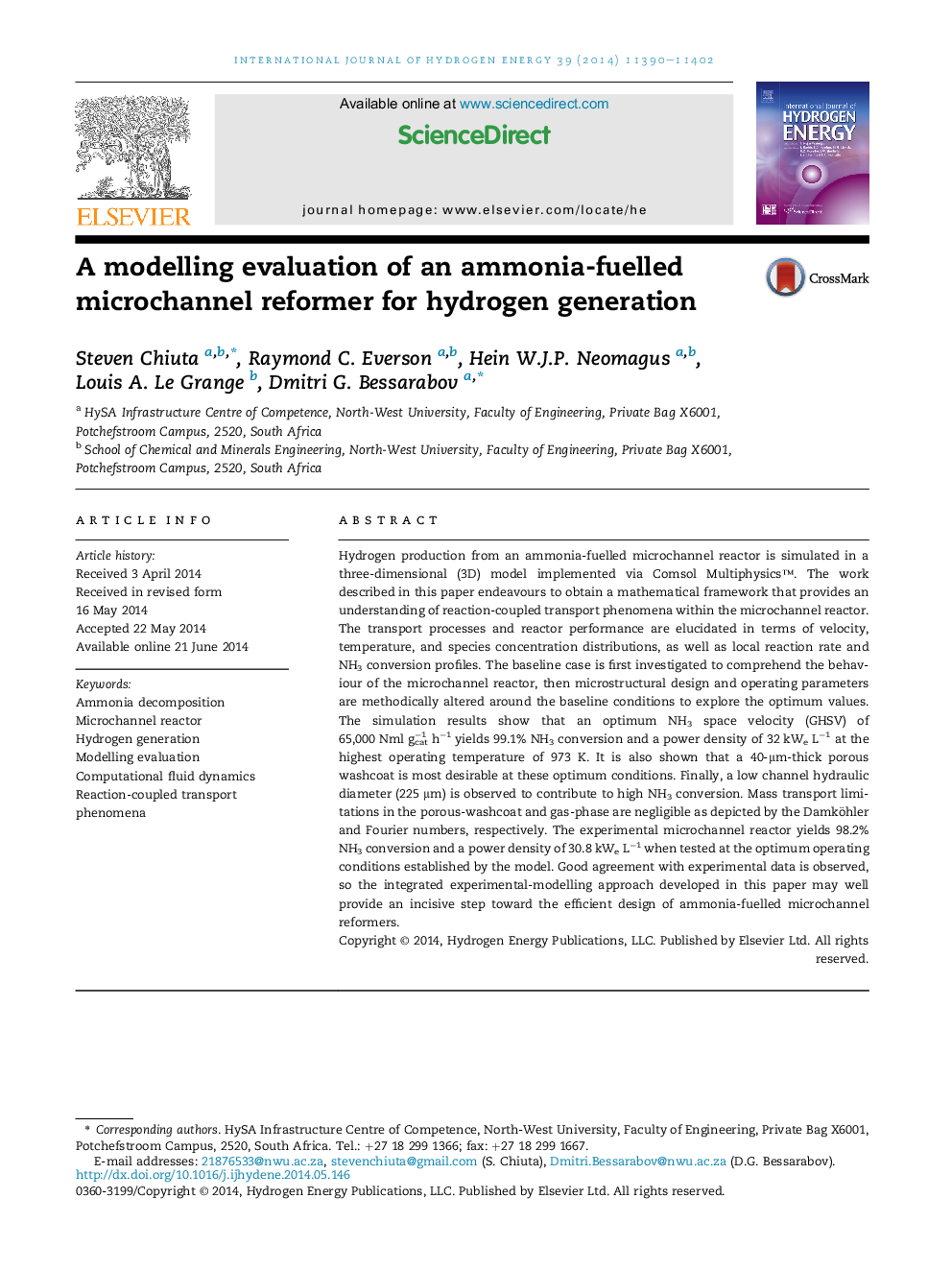| کد مقاله | کد نشریه | سال انتشار | مقاله انگلیسی | نسخه تمام متن |
|---|---|---|---|---|
| 1273157 | 1497487 | 2014 | 13 صفحه PDF | دانلود رایگان |
• Reaction-coupled transport phenomena within the microchannel reactor is investigated.
• Optimum microstructural design and operating parameters are methodically investigated.
• Mass transport limitations in the porous-washcoat and gas-phase are negligible.
• CFD model exceptionally captures the performance of the experimental reactor.
• Integrated experimental-modelling is an efficient design approach for NH3 microreactor.
Hydrogen production from an ammonia-fuelled microchannel reactor is simulated in a three-dimensional (3D) model implemented via Comsol Multiphysics™. The work described in this paper endeavours to obtain a mathematical framework that provides an understanding of reaction-coupled transport phenomena within the microchannel reactor. The transport processes and reactor performance are elucidated in terms of velocity, temperature, and species concentration distributions, as well as local reaction rate and NH3 conversion profiles. The baseline case is first investigated to comprehend the behaviour of the microchannel reactor, then microstructural design and operating parameters are methodically altered around the baseline conditions to explore the optimum values. The simulation results show that an optimum NH3 space velocity (GHSV) of 65,000 Nml gcat−1 h−1 yields 99.1% NH3 conversion and a power density of 32 kWe L−1 at the highest operating temperature of 973 K. It is also shown that a 40-μm-thick porous washcoat is most desirable at these optimum conditions. Finally, a low channel hydraulic diameter (225 μm) is observed to contribute to high NH3 conversion. Mass transport limitations in the porous-washcoat and gas-phase are negligible as depicted by the Damköhler and Fourier numbers, respectively. The experimental microchannel reactor yields 98.2% NH3 conversion and a power density of 30.8 kWe L−1 when tested at the optimum operating conditions established by the model. Good agreement with experimental data is observed, so the integrated experimental-modelling approach developed in this paper may well provide an incisive step toward the efficient design of ammonia-fuelled microchannel reformers.
Journal: International Journal of Hydrogen Energy - Volume 39, Issue 22, 24 July 2014, Pages 11390–11402
